#Battle of York
Text
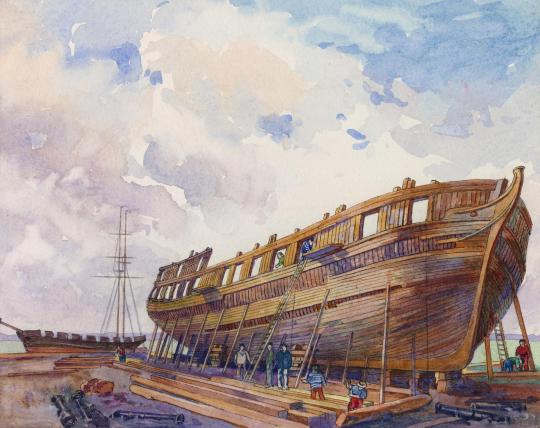
H.M. Sloop of War ''Sir Isaac Brock'', on the Stocks at York (Toronto), April 1813, drawing by Owen Staples c. 1913 (Toronto Public Library).
Fearing that Kingston had too strong a British garrison, [American General Henry] Dearborn sought a surer victory by attacking a secondary target: York. Poorly fortified and lightly defended (by seven hundred men), York also promised a symbolic payoff as the capital of Upper Canada. And there was the allure of a warship, the Sir Isaac Brock, under construction at York. By capturing and completing that ship, the Americans could increase and prolong their command of Lake Ontario. [...]
Making the best of a bad situation, the British commander, General Roger H. Sheaffe, ordered a retreat by his regulars toward Kingston to the east. He had fires set to destroy the Sir Isaac Brock and to blow up a stock of gunpowder in a stone storehouse. The massive explosion sent skyward a deafening fireball and tons of stone, which fell in a deadly rain on the advancing American troops, killing 38 and wounding 222.
— Alan Taylor, The Civil War Of 1812: American Citizens, British Subjects, Irish Rebels, and Indian Allies
Although destroying military assets before they fall into enemy hands is standard practice, General Dearborn was apparently so annoyed by the destruction of Sir Isaac Brock that he delayed in ratifying an agreement of surrender after capturing York. This would have far-reaching consequences. American soldiers and sailors looted and burned York, and this was an impetus for British forces eventually burning the White House in revenge.
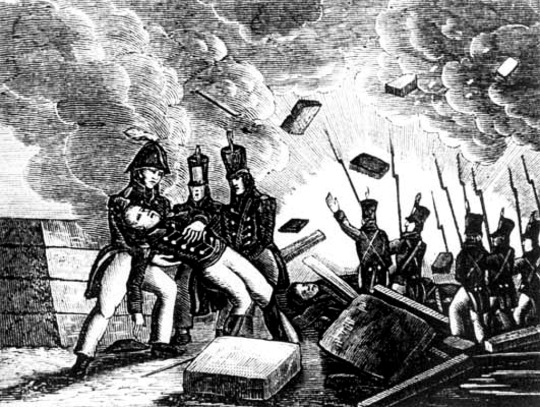
US Brigadier-General Zebulon Pike fatally wounded in the explosion of the Fort York gunpowder magazine, 1813 (The Friends of Fort York).
#War of 1812 Wednesday#war of 1812#age of sail#sir isaac brock#great lakes#burning of york#military history#canadian history#battle of york#having many thoughts about john graves simcoe (who built the garrison at fort york)
29 notes
·
View notes
Photo

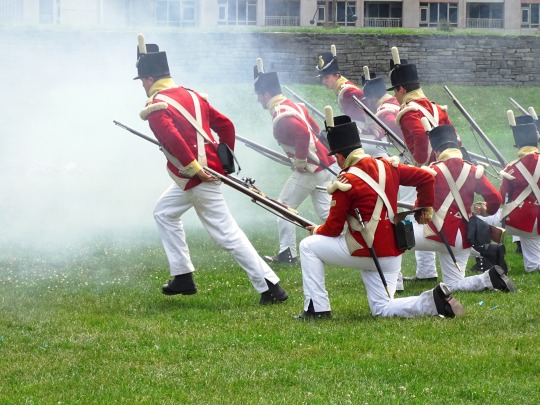
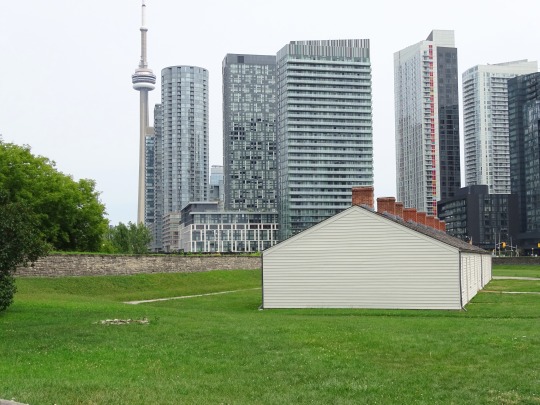






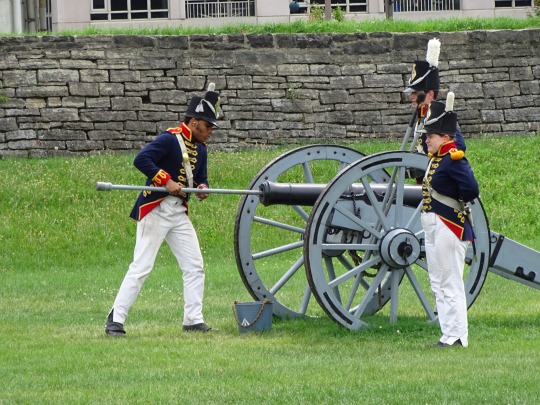
War of 1812: American troops captured York, the capital of Upper Canada, in the Battle of York on April 27, 1813.
#Fort York National Historic Site#Fort York Squad#historical reenactment#travel#Toronto#Ontario#Canada#summer 2018#original photography#vacation#Fort York Guard Royal Artillery#6-pounder field gun#War of 1812#US troops#captured#Battle of York#27 April 1813#110th anniversary#US history#Canadian history#architecture#cityscape#tourist attraction#landmark
4 notes
·
View notes
Text
Quick reminder of how adorably excited Leo and Mikey are to see Donnie in this scene.

... that is all.
#rottmnt#tmnt#battle nexus: new york#my post#alt text#look at their faces!#mikey's nuzzling#leo's happy hand pats#it's adorable#rise of the tmnt
3K notes
·
View notes
Note
Hey Scott! I found this song and it kind of reminds me of when you guys went through with the fight against Thanos! You should check it out! Peyton Parrish - Battle of York Ft. Miracle of Sound (Official Music Video) - YouTube - Spider-Man Anon.
Wow, Spider-Man Anon! That's pretty awesome! That's got a good sound to it. I really think Thor could play that going into battle, ya know?
I like it, dude. Thanks for sharing!


#ask scott lang#scott lang#ant-man#spider man’s anon friend#spider man anon#peyton parrish#avengers endgame#battle for earth#battle of york#link#youtube#antman#ant man
1 note
·
View note
Note
I just noticed in Battle Nexus: New York, when Draxum was trying to convince the co. that they were trapped in a mind-illusion he asked where the turtles were: the colors of Leo and Donnie were switched. He mistook the twins' colors, that's hilarious!
They're basically identical, duh!


#Anonymous#answer#i couldn't stop myself from posting that edit sorry#baron draxum#leo#donnie#the lair#edit#smart lair#battle nexus: new york#rottmnt#rise of the teenage mutant ninja turtles
1K notes
·
View notes
Text
Man “Battle Nexus: New York” was a great episode but I do have one major gripe with it.
Like. Raph being paired up with Ghostbear? Makes sense. Works great. Works amazing, even.
Mikey being paired up with Meatsweats? Yeah that checks out!!
Donnie getting…Hypno…? I mean. I guess Donnie doesn’t like magic so it kindaaa works but Kendra would have been a much better choice to me personally. Maybe Big Mama didn’t wanna include a human or something…
And Leo getting…uh…one of the Sando Brothers???? Of all villains? Nah let’s be real, his main villain is more Big Mama herself (or Leo could be considered his own worst enemy lmao-). Hell Hypno would have probably worked better here considering their shared love for magic tricks and stuff, but Carl Sando????
#rottmnt#rise of the teenage mutant ninja turtles#battle nexus: new york#nah this will always be baffling to me#like no joke big mama really is Leo’s main villain so it makes sense that she’s not paired with him#given that she’s running this all#but giving him ONE of the Sando brothers?? not even both???#outrageous#hypno or even warren would have been better here tbh#at least there’s some basis there for both and either option would have been so fun#not that what we got WASNT fun it def was but the sando bro was the weak link because no one cares about him#and I would have killed for a Donnie Kendra forced team up 😭#Donnie also could have worked with Stockboy ig or hell even Repo tbh?#but Kendra is the much more interesting and fitting choice here for him imo#honestly though this post was made because I do NOT understand the choice of CARL SANDO#both of them together are forgettable enough#separating them gets rid of the one thing they even had#I remember watching and being like who tf is that#he’s got some funny moments but man anyone would have been better 😭#going back to Kendra and Donnie because I LOVE their dynamic#the result of their team up could have ended exactly the same as canon#only instead of Kendra not knowing chess it’s instead her and Donnie arguing about what the right move would be#and they never actually make a move because of it
376 notes
·
View notes
Text
Leo: Look, I know we don’t see eye to eye, but I think-
Slash: That’s because you’re too short to do so.
Leo: …
Leo: Listen here you-
#incorrect tmnt quotes#source: tik tok#tmnt 2012#tmnt#teenage mutant ninja turtles#leonardo#slash#battle for new york
285 notes
·
View notes
Text
Daily Rise Quotes: DAY 298
Draxum: No! We are trapped inside Big Mama's mystic orb! Look at where we are, and who we're with. How did we get here? Where are the turtles? Who even likes Foot Recruit?
Cassandra: Huh?

(Season 2, Episode 11 - Battle Nexus: New York)
#rottmnt#rise of the tmnt#rise of the teenage mutant ninja turtles#quote#risequotes#day 298#battle nexus: new york#battle nexus new york#alt text#tmnt#draxum#baron draxum#cassandra jones#casey jones
175 notes
·
View notes
Text
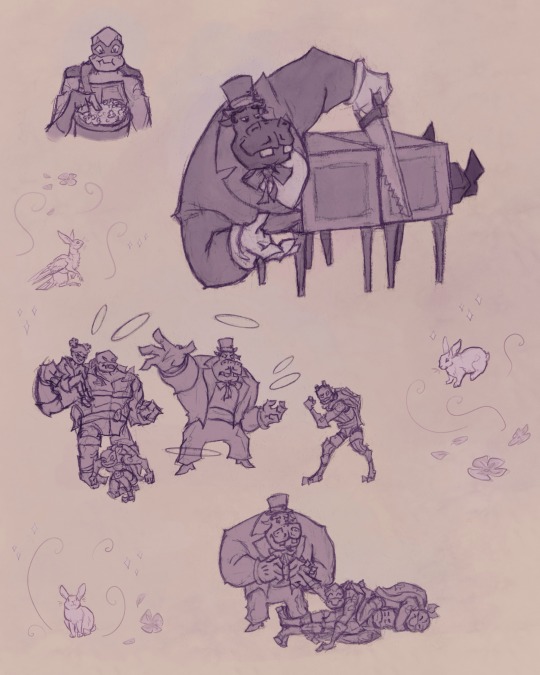

Day 24 of TMayNT: Favorite turtle + villain dynamic
I chose Hypno-potamus from Rise of the TMNT for this prompt :]
I love his character development and how he seems to grow a soft spot for the turtles.
These sketches are redrawn from screenshots except for the doodles of rabbits, doves etc :]
(Note: I chose to draw Hypno in a top hat rather than a turban because one of the writers who worked on the show said that Hypno was not wearing the turban for religious reasons. It was part of his costume. Also, Hypno’s canon design, especially as a human, has similarities to harmful stereotypes of Romani people—so a few of Hypno’s fans on here including me like to depict Hypno with a top hat instead.)
the TMayNT challenge is hosted by @mikasleaf see more at @tmaynt
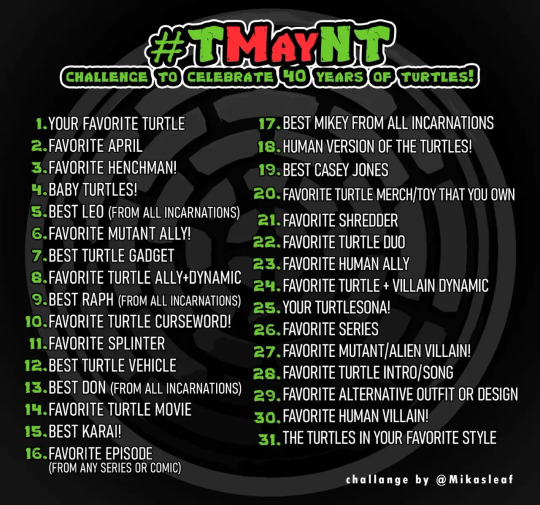
#sofia’s art#rottmnt#rise of the tmnt#rise hypno#hypno potamus#rise leo#rise raph#rise donnie#rise mikey#rise april#tmaynt#tmnt art challenge#studies#sketches#leave hypno and leo alone for a moment and hypno starts putting on a magic show#leo loves magic so much it would have been fun to see those two become friends#i think hypno would have been excited for a fan unlike ghost bear and meat sweats#hypno really did seem happy when donnie mikey and leo reunited in battle nexus: new york#and he took his role helping donnie seriously even though he didn’t know how to play chess and it seemed like only donnie was in danger#in the movie neither hypno nor leo seemed to take their fight very seriously hypno didn’t even take out his rings#also I didn’t draw anything about it but in a deleted scene for the movie in the bad future hypno and warren are on the turtle’s team#not only that but they appeared to be in leo’s inner circle they were with the people who we’re going to go back in time#in case you were wondering the little creature with the rabbits and doves is a character of mine
114 notes
·
View notes
Note
PLS, I NEED TO SEE OUR POOKIEBEAR C ACTUALLY GETTING THE COMPANY AND FIRING THEIR DAD'S ASS TO OBLIVION
the morning of C Lacroix’s 22nd birthday was a muted affair, the sun reluctant to break through the thick clouds that hung low over manhattan. it was as if the city itself was holding its breath, sensing the storm brewing beneath the surface.
in the penthouse high above the streets, the air was taut with anticipation, the stillness almost unbearable. everything in the room—the sleek, minimalist furniture, the cold gleam of marble floors, the panoramic view of a city that never truly slept—spoke of control. but today, that control was about to be weaponized, unleashed in a way that would ripple through the lives of wall street’s biggest players like a carefully orchestrated symphony of a tidal wave.
C stood by the window, their reflection a ghostly figure against the backdrop of the city they had vowed to conquer. every inch of their being was coiled with a tension that spoke not of uncertainty, but of the meticulous precision with which they had planned every detail of this day.
for twelve years, they had waited for this moment—twelve long years of enduring the shadow of a man who had sought to crush their spirit, to mold them into something small, something subservient. but today, alain lacroix would learn the folly of underestimating the very being he had dared to even try to break.
behind C, the sound of soft footsteps broke the silence, and they turned to see their soulmate—the one person who had stood by them through it all, who had quietly, relentlessly, maneuvered the pieces into place for this final move. you were the embodiment of subtle power, a force that operated in the shadows, unseen but undeniable. your presence in the room was like a quiet storm, one that had gathered strength over years of meticulous planning. and together, you were about to rain havoc on new york city.
you approached the desk where the final contract lay—a simple document that belied the magnitude of what it represented. the acquisition of lacroix and co. was complete, not through hostile takeovers or boardroom battles, but through the quiet, calculated moves that had become the hallmark of you and C. you had done it, had bought the company out from under alain lacroix’s nose, and now, with a single stroke of a pen, you were handing the reins to C.
“do you know how long i’ve been waiting for this moment?” C’s voice was a low murmur, almost a caress, as they met your gaze. they situate themself on the chair, looking down at the papers representing all the pain they had gone through. there was a fire in their chalcedony gaze, one that had been stoked by years of quiet fury, of pent-up resentment that was now on the verge of release.
you smiled, a slow, dangerous smile that reminded them of secrets shared, of plans hatched in the dead of night. “revenge,” you said softly. “i’ve heard it’s a dish best served cold.”
C’s lips twitched into a smile that was anything but kind. “twelve years ago, he left after taking everything from me.” the words were spoken with a calm that hid the storm raging inside them. “but now, i’m taking it all back.”
you reached for the pen on the desk, holding it out to C with a flourish that was almost theatrical. once they took it, you situated yourself behind their chair, arms wrapped around their shoulder as you peered onto the papers with them.
“the inheritance that was rightfully yours,” you said, your voice a soothing balm to C’s simmering rage. “brick by brick, remember? you’ll rebuild it. and alain lacroix will have no one to blame but his foolish self.”
C reaches up, their fingers brushing against your arms in a moment of silent understanding. this was more than a business transaction; it was a reclamation of power, a rewriting of history. with a swift, decisive motion, C signed the contract, the sound of the pen scratching across the paper like a death knell for their father’s empire.
as they set the pen down, C felt a strange sense of calm wash over them—a calm that came not from the act of signing, but from the knowledge that the final blow was yet to come. they reached for the phone on the desk, their movements deliberate, almost ritualistic. alain’s number was already dialed in, a ghost from the past summoned into the present.
the phone rang once, twice, before a voice crackled through the receiver—alain lacroix’s voice, thick with the arrogance that had defined his every interaction. “who is it?” he barked, clearly annoyed at the intrusion.
“missed me, father?” the words were delivered with a venomous calm, each syllable a shard of ice piercing through the phone line. “you never called. you never texted. i thought you forgot about me.”
there was a beat of silence, then alain’s voice returned, dripping with condescension. “what do you think you’re doing, C? this isn’t one of your childish games. you think buying my company will make you my equal?”
C’s smile was a razor-sharp thing, dangerous in its serenity. “your company?” they let out a soft laugh, one that held no warmth. “you misunderstand. lacroix and co. is mine now, if you haven’t already gotten the news. you took everything from me. but you forgot one thing, father. power doesn’t come from money or titles. it comes from control. and today, i control the very ground you’re setting your shoes on.”
alain’s voice crackled through the receiver, laced with fury. “you think this will hurt me?” he spat, the bravado of a man who had yet to realize his empire was crumbling around him. “you’re nothing without me, you ungrateful—”
“i’ve never been anything because of you,” C cut him off, their tone measured, every word delivered with the precision of a surgeon’s scalpel. “but you, father… you’re nothing without the company. and now, you’re nothing without me.”
C let out a cruel laugh, before continuing, “all those years you preyed on a vulnerable child. you thought you could teach me a lesson, show me my place. now, i’m going to show you yours.”
they hung up the phone with a finality that echoed through the room. alain’s curses, his impotent rage, were nothing more than noise now—background static to the cacophony of destruction C was about to unleash with you on the new york elite.
looking at them, you saw the remnants of the monster that their father had created. beaten and crafted into a creature of rage and pride. one that you had molded into something far more terrifyingly beautiful than alain lacroix’s wildest dreams. your own bloody frankenstein.
“C,” you murmured, your voice a soft, steadying force anchoring them. almost as if on instinct, they leaned their head backward, correctly anticipating the kiss that had them breathing hard and wild.
“let me treat you tonight,” C muttered, breathless against your lips. “anything you want, mon ange.”
“isn’t it your birthday today, lacroix?” you teased, your smile wide and genuine. “save your money. you’ll need it for the next company you buy.”
you noticed the ways the green of their eyes darkened with something deeper than just desire. “then i’m afraid you’ll have to give yourself to me, mon ange. i’ve waited so long to have you like this.”
#power couple? power couple.#everybody in new york shaking in their patagonia vests rn#battle of the finance peeps: who’s gonna save us from the recession?#ro: c lacroix#interactive fiction#if: the ballad of the young gods#interactive novel#twine wip#interactive story#ro scenarios
87 notes
·
View notes
Text
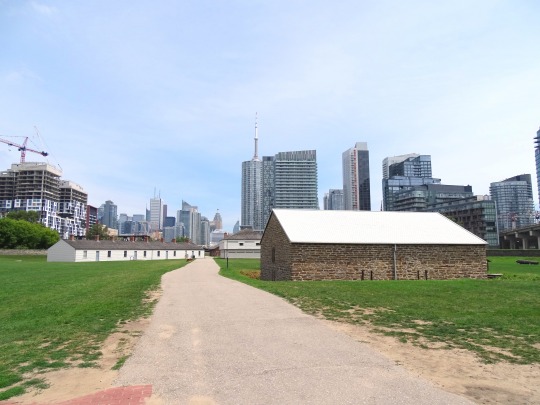

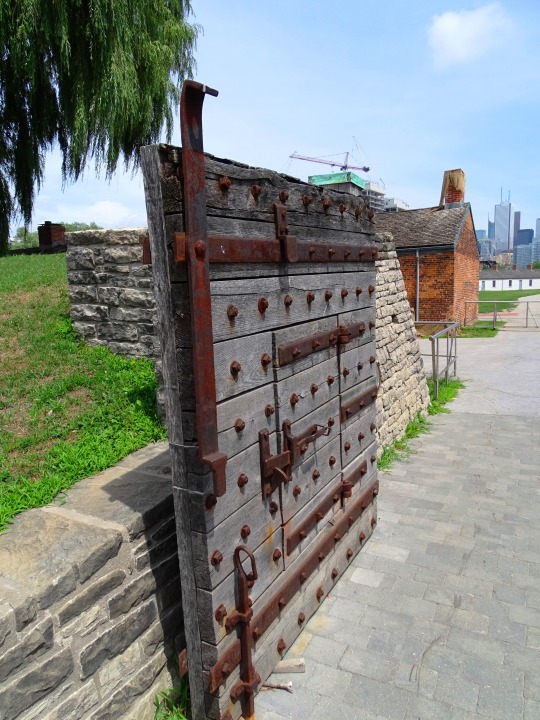
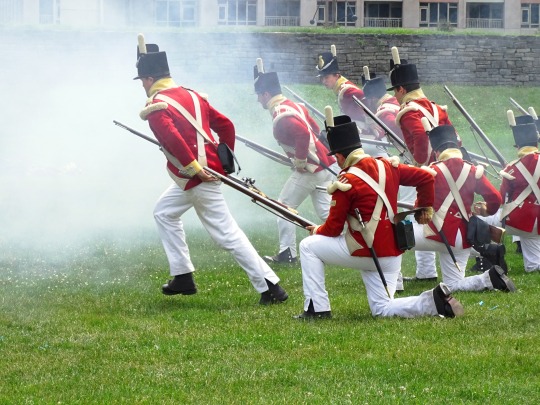






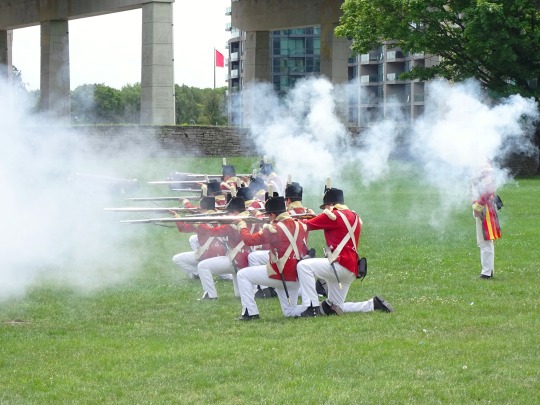


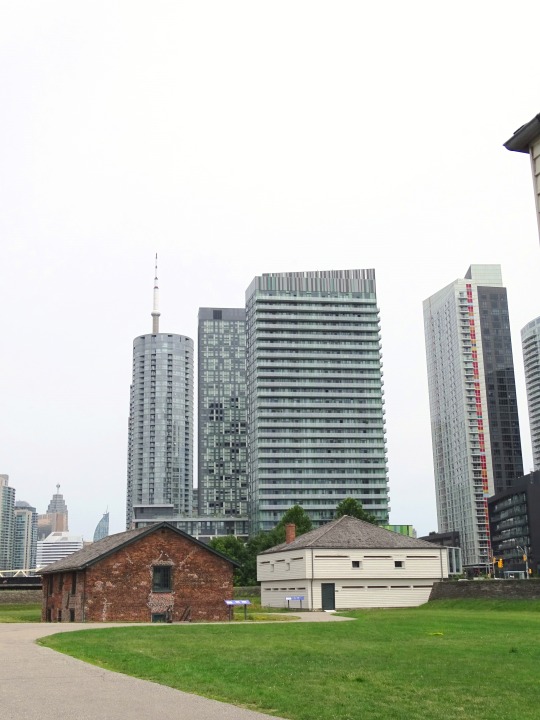





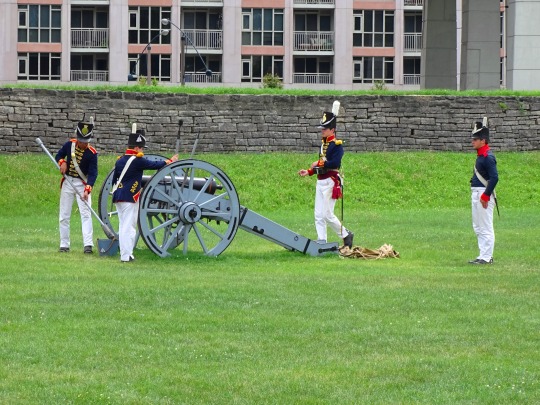
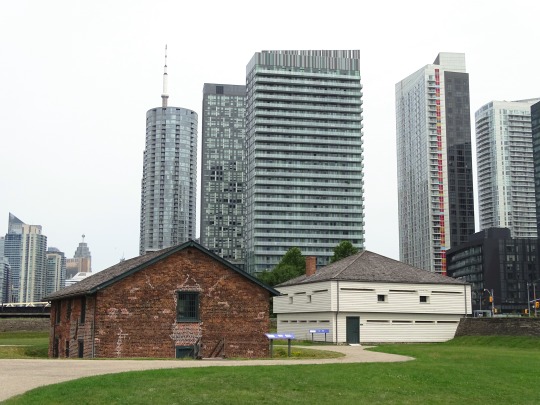


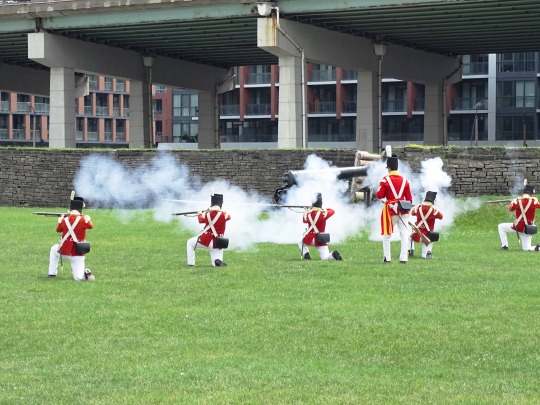
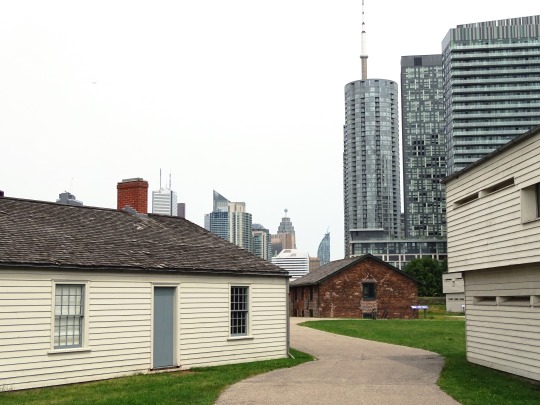



War of 1812: American troops captured York, the capital of Upper Canada, in the Battle of York on April 27, 1813.
#War of 1812#US troops#captured#Fort York National Historic Site of Canada#Battle of York#27 April 1813#original photography#travel#tourist attraction#landmark#museum#cityscape#historical reenactment#architecture#Ontario#summer 2018#Canada#Fort York Squad#Fort York Guard#Fort York Guard Royal Artillery#cannon#barrack#lawn#vacation#anniversary#US history#Canadian history
0 notes
Text

One gangster lies dead next to a bullet-ridden car after a battle between police and a gang in August 1931. The police chased the hoodlums for five miles and the fight resulted in 6 being killed and several injured among innocent bystanders. This followed on President Hoover’s appeal to police chiefs to quell the gangster peril in principal American cities.
Photo: Associated Press
#vintage New York#1930s#gangsters#criminals#hoodlums#police chase#crime#cops & robbers#gangs#1930s crime#1930s New York#gun battle
65 notes
·
View notes
Text

Margaret of Anjou Taken Prisoner after the Battle of Tewkesbury by John Gilbert
#battle of tewkesbury#wars of the roses#margaret of anjou#art#john gilbert#england#medieval#middle ages#tewkesbury abbey#house of york#house of lancaster#english#history#gloucestershire#europe#european#mediaeval#knights#knight#soldiers#palfrey#horses#sky#landscape#clouds#edward iv#edward of westminster#sir john gilbert
99 notes
·
View notes
Text

My tribute to @ingunnsarareblogs sunset duo!
#ingunndtinys#sunset duo#raphael#michelangelo#rottmnt#save rottmnt#i was a coward and didn't draw the hamato wanderers au#sorry#is the car looking familiar?#yes it's the earth protection force van#boom baby#bg is my nemesis#new york#battle#tmnt
442 notes
·
View notes
Note
Hi Ho! Could I see some screenshots of the turtles wearing clothes? Like.. actual clothes.
Yes yes certainly
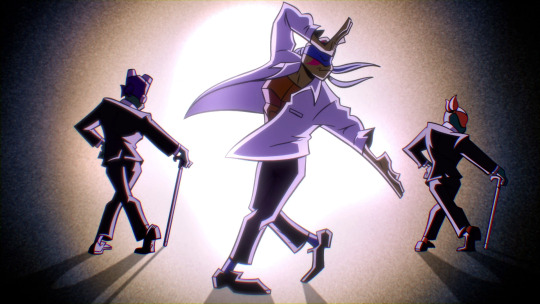







#Anonymous#requests#rottmnt#rise of the teenage mutant ninja turtles#the clothes don't make the turtle#mad dogs#donnie#raph#mikey#leo#air turtle#battle nexus: new york#answer
338 notes
·
View notes
Text
Captain Alexander Hamilton: A Timeline
As Alexander Hamilton’s time serving as Captain of the New York Provincial Company of Artillery is about to become my main focus within The American Icarus: Volume I, I wanted to put a timeline together to share what I believe to be a super fascinating period in Hamilton's life that’s often overlooked. Both for anyone who may be interested and for my own benefit. If available to me, I've chosen to hyperlink primary materials directly for ease. My main repositories of info for this timeline were Michael E. Newton's Alexander Hamilton: The Formative Years, The Papers of Alexander Hamilton and The Papers of George Washington, Revolutionary War Series on Founders Online, and the Library of Congress, Hathitrust, and the Internet Archive. This was a lot of fun to put together and I can not wait to include fictionalizations of all this chaos in TAI (literally, 20-something chapters are dedicated to this) hehehe....
Because context is king, here is a rundown of the important events that led to Alexander Hamilton receiving his appointment as captain:
Preceding Appointment - 1775:
February 23rd: The Farmer Refuted, &c. is first published in James Rivington’s New-York Gazetteer. The publication was preceded by two announcements, and is a follow up to a string of pamphlet debate between Hamilton and Samuel Seabury that had started in the fall of 1774. The Farmer Refuted would have wide-reaching effects.
April 19th: Battles of Lexington and Concord — The first shots of the American War for Independence are fired in Lexington, Massachusetts, and soon followed by fighting in Concord, Massachusetts.
April 23rd: News of Lexington and Concord first reaches New York. [x] According to his friend Nicholas Fish in a later letter, "immediately after the battle of Lexington," Hamilton "attached himself to one of the uniform Companies of Militia then forming for the defense of the Country by the patriotic young men of this city." It is most likely that Hamilton enlisted in late April or May of 1775, and a later record of June shows that Hamilton had joined the Corsicans (later named the Hearts of Oak), alongside Nicholas Fish and Robert Troup (see Newton, Michael E. Alexander Hamilton: The Formative Years, pg. 127; for Fish's letter, Newton cites a letter from Fish to Timothy Pickering, dated December 26, 1823 within the Timothy Pickering Papers of the Massachusetts Historical Society).
June 14th: Within weeks of his enlistment, Hamilton's name appears within a list of men from the regiments throughout New York that were recommended to be promoted as officers if a Provencal Company should be raised (pp. 194-5, Historical Magazine, Vol 7).
June 15th: Congress, seated in Philadelphia, establishes the Continental Army. George Washington is unanimously nominated and accepts the post of Commander-in-Chief. [x]
Also on June 15th: Alexander Hamilton’s Remarks On the Quebec Bill: Part One is published in James Rivington’s New-York Gazetteer.
June 22nd: The Quebec Bill: Part Two is published in James Rivington’s New-York Gazetteer.
June 25th: On their way to Boston, General Washington and his generals make a short stop in New York City. The Provincial Congress orders Colonel John Lasher to "send one company of the militia to Powle's Hook to meet the Generals" and that Lasher "have another company at this side (of) the ferry for the same purpose; that he have the residue of his battalion ready to receive" Washington and his men. There is no confirmation that Alexander Hamilton was present at this welcoming parade, however it is likely, due to the fact that the Corsicans were apart of John Lasher's battalion. [x]
Also on June 25th: According to a diary entry by one Ewald Shewkirk, a dinner reception was held in Washington's honor. It is unknown if Hamilton was present at this dinner, however there is no evidence to suggest he could not have been (see Newton, Michael E. Alexander Hamilton: The Formative Years, pg. 129; Newton cites Johnston, Henry P. The Campaigns of 1776 around New York and Brooklyn, Vol. 2, pg. 103).
August 23-24th: According to his friend Hercules Mulligan decades later in his “Narrative” (being a biographical sketch, reprinted in the William & Mary Quarterly alongside a “Narrative” and letters from Robert Troup), Hamilton and himself took part in a raid upon the city's Battery with a group composed of the Corsicans and some others. They managed to haul off a good number of the cannons down in the city Battery. However, the Asia, a ship in the harbor, soon sent a barge and later came in range of the raiding party itself, firing upon them. According to Mulligan, “Hamilton at the first firing [when the barge appeared with a small gun-crew] was away with the Cannon.” Mulligan had been pulling this cannon, when Hamilton approached and asked Mulligan to take his musket for him, taking the cannon in exchange. Mulligan, out of fear left Hamilton’s musket at the Battery after retreating. Upon Hamilton’s return they crossed paths again and Hamilton asked for his musket. Being told where it had been left in the fray, “he went for it, notwithstanding the firing continued, with as much unconcern as if the vessel had not been there.”
September 14th: The Hearts of Oak first appear in the city records. [x] Within the list of officers, Fredrick Jay (John Jay’s younger brother), is listed as the 1st Lieutenant, and also appears in a record of August 9th as the 2nd Lieutenant of the Corsicans. This, alongside John C. Hamilton’s claims regarding Hamilton’s early service, has left historians to conclude that either the Corsicans reorganized into the Hearts of Oak (this more likely), or members of the Corsicans later joined the Hearts of Oak.
December 4th: In a letter to Brigadier General Alexander McDougall, John Jay writes “Be so kind as to give the enclosed to young Hamilton.” This enclosure was presumably a reply to Hamilton’s letter of November 26th (in which he raised concern for an attack upon James Rivington’s printing shop), however Jay’s reply has not been found.
December 8th: Again in a letter to McDougall, Jay mentions Hamilton: “I hope Mr. Hamilton continues busy, I have not recd. Holts paper these 3 months & therefore cannot Judge of the Progress he makes.” What this progress is, or anything written by Hamilton in John Holt’s N. Y. Journal during this period has not been definitively confirmed, leaving historians to argue over possible pieces written by Hamilton.
December 31st: Hamilton replies to Jay’s letter that McDougall likely gave him around the 14th [x]. Comparing the letters Hamilton sent in November and December I will likely save for a different post, but their differences are interesting; more so with Jay’s reply having not been found.
These mentionings of Hamilton between Jay and McDougall would become important in the next two months when, in January of 1776, the New York Provincial Congress authorized the creation of a provincial company of artillery. In the coming weeks, Hamilton would see a lot of things changing around him.
Hamilton Takes Command - 1776:
February 23rd: During a meeting of the Provincial Congress, Alexander McDougall recommends Hamilton for captain of this new artillery company, James Moore as Captain-Lieutenant (i.e: second-in-command), and Martin Johnston for 1st Lieutenant. [x]
February-March: According to Hercules Mulligan, again in his “Narrative”, "a Commission as a Capt. of Artillery was promised to" Alexander Hamilton "on the Condition that he should raise thirty men. I went with him that very afternoon and we engaged 25 men." While it is accurate that Hamilton was responsible for raising his company, as acknowledged by the New York Provincial Congress [later renamed] on August 9th 1776, Mulligan's account here is messy. Mulligan misdates this promise, and it may not have been realistic that they convinced twenty-five men to join the company in one afternoon. Nevertheless, Mulligan could have reasonably helped Hamilton recruit men between the time he was nominated for captancy and received his commission.
March 5th: Alexander Hamilton opens an account with Alsop Hunt and James Hunt to supply his company with "Buckskin breeches." The account would run through October 11th of 1776, and the final receipt would not be received until 1785, as can be seen in Hamilton's 1782-1791 cash book.
March 10th: Anticipating his appointment, Hamilton purchases fabrics and other materials for the making of uniforms from a Thomas Garider and Lieutenant James Moore. The materials included “blue Strouds [wool broadcloth]”, “long Ells for lining,” “blue Shalloon,” and thread and buttons. [x]
Hamilton later recorded in March of 1784 within his 1782-1791 cash book that he had “paid Mr. Thompson Taylor [sic: tailor] by Mr Chaloner on my [account] for making Cloaths for the said company.” This payment is listed as “34.13.9” The next entry in the cash book notes that Hamilton paid “6. 8.7” for the “ballance of Alsop Hunt and James Hunts account for leather Breeches supplied the company ⅌ Rects [per receipts].” [x]
Following is a depiction of Hamilton’s company uniform!
First up is an illustration of an officer (not Hamilton himself) as seen in An Illustrated Encyclopedia of Uniforms of The American War For Independence, 1775-1783 Smith, Digby; Kiley, Kevin F. pg. 121. By the list of supplies purchased above, this would seem to be the most accurate depiction of the general uniform.

Here is another done in 1923 of Alexander Hamilton in his company's uniform:

March 14th: The New York Provincial Congress orders that "Alexander Hamilton be, and he is hereby, appointed captain of the Provincial company of artillery of this Colony.” Alongside Hamilton, James Gilleland (alternatively spelt Gilliland) is appointed to be his 2nd Lieutenant. “As soon as his company was raised, he proceeded with indefatigable pains, to perfect it in every branch of discipline and duty,” Robert Troup recalled in a later letter to John Mason in 1820 (reprinted alongside Mulligan’s recollections in the William & Mary Quarterly), “and it was not long before it was esteemed the most beautiful model of discipline in the whole army.”
March 24th: Within a pay roll from "first March to first April, 1776," Hamilton records that Lewis Ryan, a matross (who assisted the gunners in loading, firing, and spounging the cannons), was dismissed from the company "For being subject to Fits." Also on this pay roll, it is seen that John Bane is listed as Hamilton's 3rd Lieutenant, and James Henry, Thomas Thompson, and Samuel Smith as sergeants.
March 26th: William I. Gilbert, also a matross, is dismissed from the company, "for misbehavior." [x]
March-April: At some point between March and April of 1776, Alexander Hamilton drops out of King's College to put full focus towards his new duties as an artillery captain. King's College would shut down in April as the war came to New York City, and the building would be occupied by American (and later British) forces. Hamilton would never go back to complete his college degree.
April 2nd: The Provincial Congress having decided that the company who were assigned to guard the colony's records had "been found a very expensive Colony charge" orders that Hamilton "be directed to place and keep a proper guard of his company at the Records, until further order..." (Also see the PAH) According to historian Willard Sterne Randall in an article for the Smithsonian Magazine, the records were to be "shipped by wagon from New York’s City Hall to the abandoned Greenwich Village estate of Loyalist William Bayard." [x]
Not-so-fun fact: it is likely that this is the same Bayard estate that Alexander Hamilton would spend his dying hours inside after his duel with Aaron Burr 28 years later.
April 4th: Hamilton writes a letter to Colonel Alexander McDougall acknowledging the payment of "one hundred and seventy two pounds, three shillings and five pence half penny, for the pay of the Commissioned, Non commissioned officers and privates of [his] company to the first instant, for which [he has] given three other receipts." This letter is also printed at the bottom of Hamilton’s pay roll for March and April of 1776.
April 10th: In a letter of the previous day [April 9th] from General Israel Putnam addressed to the Chairmen of the New York Committee of Safety, which was read aloud during the meeting of the New York Provincial Congress, Putnam informs the Congress that he desires another company to keep guard of the colony records, stating that "Capt. H. G. Livingston's company of fusileers will relieve the company of artillery to-morrow morning [April 10th, this date], ten o'clock." Thusly, Hamilton was relieved of this duty.
April 20th: A table appears in the George Washington Papers within the Library of Congress titled "A Return of the Company of Artillery commanded by Alexander Hamilton April 20th, 1776." The Library of Congress itself lists this manuscript as an "Artillery Company Report." The Papers of Alexander Hamilton editors calendar this table and describe the return as "in the form of a table showing the number of each rank present and fit for duty, sick, on furlough, on command duty, or taken as prisoner." [x]

The table, as seen above, shows that by this time, Hamilton’s company consisted of 69 men. Reading down the table of returns, it is seen that three matrosses are marked as “Sick [and] Present” and one matross is noted to be “Sick [and] absent,” and two bombarders and one gunner are marked as being “On Command [duty].” Most interestingly, in the row marked “Prisoners,” there are three sergeants, one corporal, and one matross listed.
Also on April 20th: Alexander Hamilton appears in General George Washington's General Orders of this date for the first time. Washington wrote that sergeants James Henry and Samuel Smith, Corporal John McKenny, and Richard Taylor (who was a matross) were "tried at a late General Court Martial whereof Col. stark was President for “Mutiny"...." The Court found both Henry and McKenny guilty, and sentenced both men to be lowered in rank, with Henry losing a month's pay, and McKenny being imprisoned for two weeks. As for Smith and Taylor, they were simply sentenced for disobedience, but were to be "reprimanded by the Captain, at the head of the company." Washington approved of the Court's decision, but further ordered that James Henry and John McKenny "be stripped and discharged [from] the Company, and [that] the sentence of the Court martial, upon serjt Smith, and Richd Taylor, to be executed to morrow morning at Guard mounting." As these numbers nearly line up with the return table shown above, it is clear that the table was written in reference to these events. What actions these men took in committing their "Mutiny" are unclear.
May 8th: In Washington's General Orders of this date, another of Hamilton's men, John Reling, is written to have been court martialed "for “Desertion,” [and] is found guilty of breaking from his confinement, and sentenced to be confin’d for six-days, upon bread and water." Washington approved of the Court's decision.
May 10th: In his General Orders of this date, General Washington recorded that "Joseph Child of the New-York Train of Artillery" was "tried at a late General Court Martial whereof Col. Huntington was President for “defrauding Christopher Stetson of a dollar, also for drinking Damnation to all Whigs, and Sons of Liberty, and for profane cursing and swearing”...." The Court found Child guilty of these charges, and "do sentence him to be drum’d out of the army." Although Hamilton was not explicitly mentioned, his company was commonly referred to as the "New York Train of Artillery" and Joseph Child is shown to have enlisted in Hamilton's company on March 28th. [x]
May 11th: In his General Orders of this date, General Washington orders that "The Regiment and Company of Artillery, to be quarter’d in the Barracks of the upper and lower Batteries, and in the Barracks near the Laboratory" which would of course include Alexander Hamilton's company. and that "As soon as the Guns are placed in the Batteries to which they are appointed, the Colonel of Artillery, will detach the proper number of officers and men, to manage them...." Where exactly Hamilton and his men were staying prior to this is unclear.
May 15th: Hamilton appears by name once more in General George Washington’s General Orders of this date. Hamilton’s artillery company is ordered “to be mustered [for a parade/demonstration] at Ten o’Clock, next Sunday morning, upon the Common, near the Laboratory.”
May 16th: In General Washington's General Orders of this date, it is written that "Uriah Chamberlain of Capt. Hamilton’s Company of Artillery," was recently court martialed, "whereof Colonel Huntington was president for “Desertion”—The Court find the prisoner guilty of the charge, and do sentence him to receive Thirty nine Lashes, on the bare back, for said offence." Washington approved of this sentence, and orders "it to be put in execution, on Saturday morning next, at guard mounting."
May 18th: Presumably, Hamilton carried out the orders given by Washington in his General Orders of May 16th, and on the morning of this date oversaw the lashing of Uriah Chamberlain at "the guard mounting."
May 19th: At 10 a.m., Hamilton and his men gathered at the Common (a large green space within the city which is now City Hall Park) to parade before Washington and some of his generals as had been ordered in Washington's General Orders of May 15th. In his Sketches of the Life and Correspondence of Nathanael Greene (on page 57), William Johnson in 1822 recounted that, (presumably around or about this event):
It was soon after Greene's arrival on Long Island, and during his command at that post, that he became acquainted with the late General Hamilton, afterwards so conspicuous in the councils of this country. It was his custom when summoned to attend the commander in chief, to walk, when accompanied by one or more of his aids, from the ferry landing to head-quarters. On one of these occasions, when passing by the place then called the park, now enclosed by the railing of the City-Hall, and which was then the parade ground of the militia corps, Hamilton was observed disciplining a juvenile corps of artillerist, who, like himself, aspired to future usefulness. Greene knew not who he was, but his attention was riveted by the vivacity of his motion, the ardour of his countenance, and not less by the proficiency and precision of movement of his little corps. Halt behind the crowd until an interval of rest afforded an opportunity, an aid was dispatched to Hamilton with a compliment from General Greene upon the proficiency of his corps and the military manner of their commander, with a request to favor him with his company to dinner on a specified day. Those who are acquainted with the ardent character and grateful feelings of Hamilton will judge how this message was received. The attention never forgotten, and not many years elapsed before an opportunity occurred and was joyfully embraced by Hamilton of exhibiting his gratitude and esteem for the man whose discerning eye had at so early a period done justice to his talents and pretensions. Greene soon made an opportunity of introducing his young acquaintance to the commander in chief, and from his first introduction Washington "marked him as his own."
Michael E. Newton notes that William Johnson never produced a citation for this tale, and goes on to give a brief historiography of it (Johnson being the first to write about this). While it is possible that General Greene could have sent an aide-de-camp to give his compliments to Hamilton after seeing his parade drill, there is no certain evidence to suggest that Greene introduced Hamilton to George Washington. Newton also notes that "John C. Hamilton failed to endorse any part of the story." (see Newton, Michael E. Alexander Hamilton: The Formative Years, pp. 150-152).
May 26th: Alexander Hamilton writes a letter to the New York Provincial Congress concerning the pay of his men. Hamilton points out that his men are not being paid as they should be in accordance to rules past, and states that “They do the same duty with the other companies and think themselves entitled to the same pay. They have been already comparing accounts and many marks of discontent have lately appeared on this score.” Hamilton further points out that another company, led by Captain Sebastian Bauman, were being paid accordingly and were able to more easily recruit men.
Also on May 26th: the Provencal Congress approved Hamilton’s request, resolving that Hamilton and his men would receive the same pay as the Continental artillery, and that for every man he recruited, Hamilton would receive 10 shillings. [x]
May 31st: Captain Hamilton receives orders from the Provincial Congress that he, “or any or either of his officers," are "authorized to go on board any ship or vessel in this harbour, and take with them such guard as may be necessary, and that they make strict search for any men who may have deserted from Captain Hamilton’s company.” These orders were given after "one member informed the Congress that some of Captain Hamilton’s company of artillery have deserted, and that he has some reasons to suspect that they are on board of the Continental ship, or vessel, in this harbour, under the command of Capt. Kennedy." Unfortunately, I as of writing this have been unable to find any solid information on this Captain Kennedy to better identify him, or his vessel.
June 8th: The New York Provincial Congress orders that Hamilton "furnish such a guard as may be necessary to guard the Provincial gunpowder" and that if Hamilton "should stand in need of any tents for that purpose" Colonel Curtenius would provide them. It is unknown when Hamilton's company was relieved of this duty, however three weeks later, on June 30th, the Provincial Congress "Ordered, That all the lead, powder, and other military stores" within the "city of New York be forthwith removed from thence to White Plains." [x]
Also on June 8th: the Provincial Congress further orders that "Capt. Hamilton furnish daily six of his best cartridge makers to work and assist" at the "store or elaboratory [sic] under the care of Mr. Norwood, the Commissary."
June 10th: Besides the portion of Hamilton's company that was still guarding the colony's gunpowder, it is seen in a report by Henry Knox (reprinted in Force, Peter. American Archives, 4th Series, vol. VI, pg. 920) that another portion of the company was stationed at Fort George near the Battery, in sole command of four 32-pound cannons, and another two 12-pound cannons. Simultaneously, another portion of Hamilton's company was stationed just below at the Grand Battery, where the companies of Captain Pierce, Captain Burbeck, and part of Captain Bauman's manned an assortment of cannons and mortars.
June 17th: The New York Provincial Congress resolves that "Capt. Hamilton's company of artillery be considered so many and a part of the quota of militia to be raised for furnished by the city or county of New-York."
June 29th: A return table, reprinted in Force, Peter's American Archives, 4th Series, vol. VI, pg. 1122 showcases that Alexander Hamilton's company has risen to 99 men. Eight of Hamilton's men--one bombarder, two gunners, one drummer, and four matrosses--are marked as being "Sick [but] present." One sergeant is marked as "Sick [and] absent" and two matrosses are marked as "Prisoners."
July 4th: In Philadelphia, the Continental Congress approves the Declaration of Independence.
July 9th: The Continental Army gathers in the New York City Common to hear the Declaration read aloud from City Hall. In all the excitement, a group of soldiers and the Sons of Liberty (who included Hercules Mulligan) rushed down to the Bowling Green to tear down an equestrian statue of King George III, which they would melt into musket balls. For a history of the statue, see this article from the Journal of the American Revolution.
Also on July 9th: the New York Provincial Congress approve the Declaration of Independence, and hereafter refer to themselves as the Convention of the Representatives of the State of New York. [x]
July 12th: Multiple accounts record that the British ships Phoenix and Rose are sailing up the Hudson River, near the Battery, when as Hercules Mulligan stated in a later recollection, "Capt. Hamilton went on the Battery with his Company and his piece of artillery and commenced a Brisk fire upon the Phoenix and Rose then passing up the river. When his Cannon burst and killed two of his men who I distinctly recollect were buried in the Bowling Green." Mulligan's number of deaths may be incorrect however. Isac Bangs records in his journal that, "by the carelessness of our own Artilery Men Six Men were killed with our own Cannon, & several others very badly wounded." Bangs noted further that "It is said that several of the Company out of which they were killed were drunk, & neglected to Spunge, Worm, & stop the Vent, and the Cartridges took fire while they were raming them down." In a letter to his wife, General Henry Knox wrote that "We had a loud cannonade, but could not stop [the Phoenix and Rose], though I believe we damaged them much. They kept over on the Jersey side too far from our batteries. I was so unfortunate as to lose six men by accidents, and a number wounded." Matching up with Bangs and Knox, in his own journal, Lieutenant Solomon Nash records that, "we had six men cilled [sic: killed], three wound By our Cannons which went off Exedently [sic: accidentally]...." A William Douglass of Connecticut wrote to his wife on July 20th that they suffered "the loss of 4 men in loading [the] Cannon." (as seen in Newton, Michael E. Alexander Hamilton: The Formative Years, pg. 142; Newton cites Henry P. Johnston's The Campaigns of 1776 in and around New York and Brooklyn, vol. 2, pg. 67). As these accounts cobberrate each other, it is clear that at least six men were killed. Whether these were all due to Hamilton's cannon exploding is unclear, but is a possibility. Hamilton of course was not punished for this, but that is besides the point.
One of the men injured by the explosion of the cannon was William Douglass, a matross in Hamilton's company (not to be confused with the William Douglass quoted above from Connecticut). According to a later certificate written by Hamilton on September 14th, Douglass "faithfully served as a matross in my company till he lost his arm by an unfortunate accident, while engaged in firing at some of the enemy’s ships." The Papers of Alexander Hamilton editors date Douglass' injury to June 12th, but it is clear that this occurred on July 12th due to the description Hamilton provides.
July 26th: Hamilton writes a letter to the Convention of the Representatives (who he mistakenly addresses as the "The Honoruable The Provincial Congress") concerning the amount of provisions for his company. He explains that there is a difference in the supply of rations between what the Continental Army and Provisional Army and his company are receiving. He writes that "it seems Mr. Curtenius can not afford to supply us with more than his contract stipulates, which by comparison, you will perceive is considerably less than the forementioned rate. My men, you are sensible, are by their articles, entitled to the same subsistence with the Continental troops; and it would be to them an insupportable discrimination, as well as a breach of the terms of their enlistment, to give them almost a third less provisions than the whole army besides receives." Hamilton requests that the Convention "readily put this matter upon a proper footing." He also notes that previously his men had been receiving their full pay, however under an assumption by Peter Curtenius that he "should have a farther consideration for the extraordinary supply."
July 31st: The Convention of the Representatives of the State of New York read Hamilton's letter of July 26th at their meeting, and order that "as Capt. Hamilton's company was formally made a part of General Scott's brigade, that they be henceforth supplied provisions as part of that Brigade."
A Note On Captain Hamilton’s August Pay Book:
Starting in August of 1776, Hamilton began to keep another pay book. It is evident by Thomas Thompson being marked as the 3rd lieutenant that this was started around August 15th. The cover is below:

For unknown reasons, the editors of The Papers of Alexander Hamilton only included one section of the artillery pay book in their transcriptions, being a dozen or so pages of notes Hamilton wrote presumably after concluding his time as a captain on some books he was reading. The first section of the book (being the first 117 image scans per the Library of Congress) consists of payments made to and by Hamilton’s men, each receiving his own page spread, with the first few pages being a list of all men in the company as of August 1776, organized by surname alphabetically. The last section of the pay book (Image scans 181 to 185) consists of weekly company return tables starting in October of 1776.
As these sections are not transcribed, I will be including the image scans when necessary for full transparency, in case I have read something incorrectly. Now, back to the timeline....
August 3rd: John Davis and James Lilly desert from Hamilton's company. Hamilton puts out an advertisement that would reward anyone who could either "bring them to Captain Hamilton's Quarters" or "give Information that they may be apprehended." It is presumed that Hamilton wrote this notice himself (see Newton, Michael E. Alexander Hamilton: The Formative Years, pp. 147-148; for the notice, Newton cites The New-York Gazette; and the weekly Mercury, August 5, 12, and September 2nd, 1776 issues).
August 9th: The Convention of the Representatives resolve that "The company of artillery formally raised by Capt. Hamilton" is "considered as a part of the number ordered to be raised by the Continental Congress from the militia of this State, and therefore" Hamilton's company "hereby is incorporated into Genl. Scott's brigade." Here, Hamilton would be reunited with his old friend, Nicholas Fish, who had recently been appointed as John Scott's brigade major. [x]
August 12th: Captain Hamilton writes a letter to the Convention of the Representatives concerning a vacancy in his company. Hamilton explains that this is due to “the promotion of Lieutenant Johnson to a captaincy in one of the row-gallies, (which command, however, he has since resigned, for a very particular reason.).” He requests that his first sergeant, Thomas Thompson, be promoted as he “has discharged his duty in his present station with uncommon fidelity, assiduity and expertness. He is a very good disciplinarian, possesses the advantage of having seen a good deal of service in Germany; has a tolerable share of common sense, and is well calculated not to disgrace the rank of an officer and gentleman.…” Hamilton also requested that lieutenants James Gilleland and John Bean be moved up in rank to fill the missing spots.
August 14th: The Convention of the Representatives, upon receiving Hamilton’s letter of August 12th, order that Colonel Peter R. Livingston, "call upon [meet with] Capt. Hamilton, and inquire into this matter and report back to the House."
August 15th: Colonel Peter R. Livingston reports back to the Convention of the Representatives that, "the facts stated by Capt. Hamilton are correct..." The Convention thus resolves that "Thomas Thompson be promoted to the rank of a lieutenant in the said company; and that this Convention will exert themselves in promoting, from time to time, such privates and non-commissioned officers in the service of this State, as shall distinguish themselves...." The Convention further orders that these resolutions be published in the newspapers.
August ???: According to Hercules Mulligan in his "Narrative" account, Alexander Hamilton, along with John Mason, "Mr. Rhinelander" and Robert Troup, were at the Mulligan home for dinner. Here, Mulligan writes that, after Rhineland and Troup had "retired from the table" Hamilton and Mason were "lamenting the situation of the army on Long Island and suggesting the best plans for its removal," whereupon Mason and Hamilton decided it would be best to write "an anonymous letter to Genl. Washington pointing out their ideas of the best means to draw off the Army." Mulligan writes that he personally "saw Mr. H [Hamilton] writing the letter & heard it read after it was finished. It was delivered to me to be handed to one of the family of the General and I gave it to Col. Webb [Samuel Blachley Webb] then an aid de Champ [sic: aide-de-camp]...." Mulligan expresses that he had "no doubt he delivered it because my impression at that time was that the mode of drawing off the army which was adopted was nearly the same as that pointed out in the letter." There is no other source to contradict or challenge Hercules Mulligan's first-hand account of this event, however the letter discussed has not been found.
August 24th: Alexander Hamilton helped to prevent Lieutenant Colonel Herman Zedwitz from committing treason. On August 25th, a court martial was held (reprinted in Force, Peter. American Archives, 5th Series, vol. I, pp. 1159-1161) wherein Zedwitz was charged with "holding a treacherous correspondence with, and giving intelligence to, the enemies of the United States." In a written disposition for the trial, Augustus Stein tells the Court that on the previous day [this date, August 24th] Zedwitz had given him a letter with which Stein was directed "to go to Long-Island with [the] letter [addressed] to Governour Tryon...." Stein, however, wrote that he immediately went "to Captain Bowman's house, and broke the letter open and read it. Soon after. Captain Bowman came in, and I told him I had something to communicate to the General. We sent to Captain Hamilton, and he went to the General's, to whom the letter was delivered." By other instances in this court martial record, it is clear that Stein had meant Captain Sebastian Bauman (and to this, Zedwitz's name is also spelled many different times throughout this record), which would indicate that the "Captain Hamilton" mentioned was Alexander Hamilton, Bauman's fellow artillery captain. Bauman was the only captain serving by that name in the army at this time (see Heitman, Francis B. Historical Register of the Officers of the Continental Army during the War of the Revolution, pg. 92). It could be possible that Alexander Hamilton personally delivered this letter into Washington's hands and explained the situation, or that he passed it on to one of Washington's staff members.
August 27th: Battle of Long Island — Although Alexander Hamilton was not involved in this battle, for no primary accounts explicitly place him in the middle of this conflict, it is significant to note considering the previous entry on this timeline.
May-August: According to Robert Troup, again in his 1821 letter to John Mason, he had paid Hamilton a visit during the summer of 1776, but did not provide a specific date. Troup noted that, “at night, and in the morning, he [Hamilton] went to prayer in his usual mode. Soon after this visit we were parted by our respective duties in the Army, and we did not meet again before 1779.” This date however, may be inaccurate, for also according to Troup in another letter reprinted later in the William & Mary Quarterly, they had met again while Hamilton was in Albany to negotiate the movement of troops with General Horatio Gates in 1777.
September 7th: In his General Orders of this date, General Washington writes that John Davis, a member of Alexander Hamilton's company who had deserted in early August, was recently "tried by a Court Martial whereof Col. Malcom was President, was convicted of “Desertion” and sentenced to receive Thirty-nine lashes." Washington approved of this sentence, and ordered that it be carried out "on the regimental parade, at the usual hour in the morning."
September 8th: In his General Orders of this date, Washington writes that John Little, a member of "Col. Knox’s Regt of Artillery, [and] Capt. Hamilton’s Company," was tried at a recent court martial, and convicted of “Abusing Adjt Henly, and striking him”—ordered to receive Thirty-nine lashes...." Washington approved of this sentence, and ordered it, along with the other court martial sentences noted in these orders, to be "put in execution at the usual time & place."
September 14th: Hamilton writes a certificate to the Convention of the Representatives of the State of New York regarding his matross, William Douglass, who “lost his arm by an unfortunate accident, while engaged in firing at some of the enemy’s ships” on July 12th. Hamilton recommends that a recent resolve of the Continental Congress be heeded regarding “all persons disabled in the service of the United States.”
September 15th: On this date, the Continental Army evacuated New York City for Harlem Heights as the British sought control of the city. According to the Memoirs of Aaron Burr, vol. 1, General Sullivan’s brigade had been left in the city due to miscommunication, and were “conducted by General Knox to a small fort” which was Fort Bunker Hill. Burr, then a Major and aide-de-camp to General Israel Putman, was directed with the assistance of a few dragoons “to pick up the stragglers,” inside the fort. Being that Knox was in command of the Army’s artillery, Hamilton’s company would be among those still at the fort. Major Burr and General Knox then had a brief debate (Knox wishing to continue the fight whereas Burr wished to help the brigade retreat to safety). Aaron Burr at last remarked that Fort Bunker Hill “was not bomb-proof; that it was destitute of water; and that he could take it with a single howitzer; and then, addressing himself to the men, said, that if they remained there, one half of them would be killed or wounded, and the other half hung, like dogs, before night; but, if they would place themselves under his command, he would conduct them in safety to Harlem.” (See pages 100-101). Corroborating this account are multiple certificates and letters from eyewitnesses of this event reprinted in the Memiors on pages 101-106. In a letter, Nathaniel Judson recounted that, “I was near Colonel Burr when he had the dispute with General Knox, who said it was madness to think of retreating, as we should meet the whole British army. Colonel Burr did not address himself to the men, but to the officers, who had most of them gathered around to hear what passed, as we considered ourselves as lost.” Judson also remarked that during the retreat to Harlem Heights, the brigade had “several brushes with small parties of the enemy. Colonel Burr was foremost and most active where there was danger, and his con-duct, without considering his extreme youth, was afterwards a constant subject of praise, and admiration, and gratitude.”
Alexander Hamilton himself recounted in later testimony for Major General Benedict Arnold’s court martial of 1779 that he “was among the last of our army that left the city; the enemy was then on our right flank, between us and the main body of our army.” Hamilton also recalled that upon passing the home of a Mr. Seagrove, the man left the group he was entertaining and “came up to me with strong appearances of anxiety in his looks, informed me that the enemy had landed at Harlaam, and were pushing across the island, advised us to keep as much to the left as possible, to avoid being intercepted….” Hercules Mulligan also recounted in his “Narrative” printed in the William & Mary Quarterly that Hamilton had “brought up the rear of our army,” and unfortunately lost “his baggage and one of his Cannon which broke down.” [x]
September ???: As can be seen in Hamilton's August 1776-May 1777 pay book, while stationed in Harlem Heights (often abbreviated as "HH" in the pay book), nearly all of Hamilton's men received some sort of item, whether this be shoes, cash payments, or other articles.
October 4th: A return table for this date appears in Alexander Hamilton’s pay book, in the back. These return tables are not included in The Papers of Alexander Hamilton for unknown reasons.

The table, as seen above, provides us a snapshot of Hamilton’s company at this time, as no other information survives about the company during October. His company totaled to 49 men. Going down the table, two matrosses were “Sick [and] Present,” one bombarder, four gunners, and six matrosses were marked as “Sick [and] absent,” and two matrosses were marked as “On Furlough.” Interestingly, another two matrosses were marked as having deserted, and two matrosses were marked as “Prisoners.”
October 11th: In Hamilton’s pay book, below the table of October 4th, another weekly return table appears with this date marked.

The return table, as seen above, again records that Hamilton’s company consisted of 49 men. Reading down the table, two matrosses were marked as “Sick [and] Present,” one bombarder and four matrosses were marked as “Sick [and] absent,” and one captain-lieutenant [being James Moore], one sergeant, and two matrosses were marked as being “On Furlough.”
To the right of the date header, in place of the usual list of positions, there is a note inside the box. The note likely reads:
Drivers. 2_ Drafts_l?] 9_ 4 of which went over in order to get pay & Cloaths & was detained in their Regt [regiment]
Drafts were men who were drawn away from their regular unit to aid another, and it’s clear that Hamilton had many men drafted into his company. This note tells us that four of these men were sent by Hamilton to gather clothing for the company, and it is likely that they had to return to their original regiment before they could return the clothing. This, at least, makes the most sense (a huge thank you to @my-deer-friend and everyone else who helped me decipher this)!! In the bottom left-hand corner of the page, another note is present, however I am unable to decipher what it reads. If anyone is able, feel free to take a shot!
October 25th: Another weekly returns table appears in Hamilton’s company pay book. Once more, this table of returns was not transcribed within The Papers of Alexander Hamilton.

The table, as seen above, shows that Hamilton’s company still consisted of 49 men. Reading down the table, it can be seen that one matross and one drummer/fifer were “Sick [but] present,” and one sergeant, two bombarders, one gunner, and four matrosses were marked as “Sick [and] absent.” Interestingly, one matross was noted as being “Absent without care”. Two matrosses were listed as “Prisoners” and again two matrosses were listed as having “Deserted.”
Underneath the table, a note is written for which I am only able to make out part. It is clear that two men from another captain’s company were drafted by Hamilton for his needs.
October 28th: Battle of White Plains — Like with Long Island, there is no primary evidence to explicitly place Alexander Hamilton, his men, or his artillery as being involved in this battle, contrary to popular belief. See this quartet of articles by Harry Schenawolf from the Revolutionary War Journal.
November 6th: Captain Hamilton wrote another certificate to the Convention of the Representatives of the State of New York regarding his matross, William Douglass, who was injured during the attacks on July 12th. This certificate is nearly identical to the one of September 14th, and again Hamilton writes that Douglass is “intitled to the provision made by a late resolve of the Continental Congress, for those disabled in defence of American liberty.”
November 22nd: As can be seen in Hamilton's pay book, all of his men regardless of rank received payments of cash, and some men articles, on this date.
December 1st: Stationed near New Brunswick, New Jersey, General Washington wrote in a report to the President of Congress, that the British had formed along the Heights, opposite New Bunswick on the Raritan River, and notably that, "We had a smart canonade whilst we were parading our Men...." Alexander Hamilton's company pay book placed he and his men at New Brunswick in around this time (see image scans 25, 28, 34, and others) making it likely that Hamilton had been present and helped prevent the British from crossing the river while the Continental Army was still on the opposite side. In his Memoirs of My Own Life, vol. 1, James Wilkinson recorded that:
After two days halt at Newark, Lord Cornwallis on the 30th November advanced upon Brunswick, and ar- Dec. 1. rived the next evening on the opposite bank of the Rariton, which is fordable at low water. A spirited cannonade ensued across the river, in which our battery was served by Captain Alexander Hamilton,* but the effects on eitlierside, as is usual in contests between field batteries only, were inconsiderable. Genei'al Washington made a shew of resistance, but after night fall decamped...
Though Wilkinson was not present at this event, John C. Hamilton similarly recorded in both his Life of Alexander Hamilton [x] and History of the Republic [x] that Hamilton was part of the artillery firing the cannonade during this event. Though there is no firsthand account of Hamilton's presence here, it is highly likely that he and his company was involved in holding off the British so that the Continental Army could retreat.
December 4th?: Either on this date, or close to it, Alexander Hamilton’s second lieutenant, James Gilleland, left the company by resigning his commission to General Washington on account of “domestic inconveniences, and other motives,” according to a later letter Hamilton wrote on March 6th of 1777.
December 5th: Another return table appears in the George Washington Papers within the Library of Congress. This table is headed, "Return of the States of part of two Companeys of artilery Commanded by Col Henery Knox & Capt Drury & Capt Lt Moores of Capt Hamiltons Com." The Papers of Alexander Hamilton editors calendar this table, and note that Hamilton's "company had been assigned at first to General John Scott’s brigade but was soon transferred to the command of Colonel Henry Knox." They also note that the table "is in the writing of and signed by Jotham Drury...." [x]

The table, as seen above, notes part of the "Troop Strength" (as the Library of Congress notes) of Captain Jotham Drury and Captain Alexander Hamilton's men. As regards Hamilton's company, the portion that was recorded here amounted to 33 men.
December 19th: Within his Warrent Book No. 2, General George Washington wrote on this date a payment “To Capn Alexr Hamilton” for himself and his company of artillery, “from 1st Sepr to 1 Decr—1562 [dollars].” As reprinted within The Papers of Alexander Hamilton.
December 25th: Within Bucks County, Pennsylvania, hours before the famous Christmas Day crossing of the Delaware River by Washington and the Continental Army, Captain-Lieutenant James Moore passed away from a "short but excruciating fit of illness..." as Hamilton would later recount in a letter of March 6th, 1777. According to Washington Crossing Historic Park, Moore has been the only identified veteran to have been buried on the grounds during the winter encampment. His original headstone read: "To the Memory of Cap. James Moore of the New York Artillery Son of Benjamin & Cornelia Moore of New York He died Decm. the 25th A.D. 1776 Aged 24 Years & Eight Months." [x] In his aforementioned letter, Alexander Hamilton remarked that Moore was "a promising officer, and who did credit to the state he belonged to...." As Hamilton and Moore spent the majority of their time physically together (and therefore leaving no reason for there to be surviving correspondence between the two), there is no clear idea of what their working relationship may have looked like.
December 26th: Battle of Trenton — Alexander Hamilton is believed to have fought in he battle with his two six-pound cannons, having marched at the head of General Nathanael Greene's column and being placed at the end of King Street at the highest point in the town. Michael E. Newton does note however that there is no direct, explicit evidence placing Hamilton at the battle, but with the knowledge of eighteen cannons being present as ordered by George Washington in his General Orders of December 25th, it is highly likely the above was the case (see Newton, Michael E. Alexander Hamilton: The Formative Years, pp. 179-180; Newton cites a number of sources for circumstantial evidence: William Stryker's The Battles of Trenton and Princeton, Jac Weller's "Guns of Destiny: Field Artillery In the Trenton-Princeton Campaign" [Military Affairs, vol. 20, no. 1], and works by Broadus Mitchell).
December ???: Within Hamilton’s pay book, a note appears for December on the page dedicated to Uriah Crawford, a matross in his company. See a close up of the image scan below.

The note likely reads:
To Cash [per] for attendance during sickness [ampersand?] funeral expenses —
This note would thus indicate that Crawford likely passed away sometime during the month, and a funeral was held. That Hamilton paid the expenses for the funeral is quite a telling note. Crawford was also provided a pair of stockings in December.
Final Months - 1777:
January 2nd: Battle of Assumpink Creek — Near Trenton, the Continental Army positioned itself on one side of the Assumpink Creek to face the approaching British, who sought to cross the bridge into Trenton. In a letter of January 5th to John Hancock, Washington explained that "They attempted to pass Sanpink [sic: Assumpink] Creek, which runs through Trenton at different places, but finding the Fords guarded, halted & kindled their Fires—We were drawn up on the other side of the Creek. In this situation we remained till dark, cannonading the Enemy & receiving the fire of their Field peices [sic: pieces] which did us but little damage." According to James Wilkinson, who was present at this battle, Hamilton and his cannons were present. [x] Corroborating this, Henry Knox wrote in a letter to his wife of January 7th that, "Our army drew up with thirty or forty pieces of artillery in front", and an anonymous eyewitness account which noted that "within sevnty of eighty yards of the bridge, and directly in front of it, and in the road, as many pieces of artillery as could be managed were stationed" to stop the crossing of the British (see Raum, John. History of the City of Trenton, New Jersey, pp. 173-175). Further, another eyewitness account from a letter written by John Haslet reported a similar story (see Newton, Michael E. Alexander Hamilton: The Formative Years, pg. 181; for Haslet's account, Newton cites Johnston, Henry P. The Campaigns of 1776 around New York and Brooklyn, Vol. 2, pg. 157). This surely would have been a sight to behold.
January 3rd: Battle of Princeton -- Overnight, the Continental Army marched to Princeton, New Jersey with a train of artillery. Once more, Alexander Hamilton was not explicitly mentioned to have been present at the battle, however with 35 artillery pieces attacking the British (see again Henry Knox's letter of January 7th), and the large role these played in the battle, there is little doubt that Hamilton and his men played a part in this crucial victory (see Newton, Michael E. Alexander Hamilton: The Formative Years, pg. 182). According to legend, one of Hamilton's cannons fired upon Nassau Hall, destroying a painting of King George II. However, this has been disproven by many different scholars and writers, including Newton.
January 20th: In a letter to his aide-de-camp, Lieutenant Colonel Robert Hansen Harrison, George Washington requests Harrison to “forward the Inclosed to Captn Hamilton….” Unfortunately, the letter Washington intended to be given to Alexander Hamilton has not been found. It is believed by both the editors of Washington and Hamilton’s papers that this letter contained Washington’s request for Hamilton to join his military family.
Also on January 20th: Many of Hamilton’s men received payments of cash on this date. Alongside cash, one man, John Martim, a matross in Hamilton’s company, was paid cash “per [Lieutenant] Thompson” for his “going to the Hospital.” The hospital in particular, and the circumstances surrounding Martim’s stay are unknown. [x]
January 25th: As printed in The Papers of Alexander Hamilton, an advertisement appeared in the Pennsylvania Evening Post directly naming Hamilton. Only one sentence, the advertisement alerts Hamilton that he “should hear something to his advantage” by “applying to the printer of this paper….” Presumably this regarded George Washington wishing to make Hamilton his newest aide-de-camp.
January 30th: Alongside cash, a greatcoat, and cash per “Doctor [Chapman?]” and a cash balance due to him, Alexander Hamilton paid his third lieutenant Thomas Thompson for gathering “sundries in Philadelphia” and for his “journey to Camp”. See close up of the image scan below. [x]

Several other later pages in the pay book indicate that Hamilton and his men were in Philadelphia at some point in January and February. It is thus plausible that Hamilton went to see the printer of the Pennsylvania Evening Post and it may be possible that Lieutenant Thompson had accompanied him and have had picked up his items while in the city, however whether or not Hamilton actually made that journey, and Thompson’s involvement are my speculation only. It is also entirely possible that Thompson's "journey to Camp" was in reference to seeing the doctor, and had picked up the "sundries" then.
March 1st: At Morristown, New Jersey, in his General Orders of this date, George Washington announces and appoints Alexander Hamilton “Aide-De-Camp to the Commander in Chief,” and wrote that Hamilton was “to be respected and obeyed as such.”
March 6th: Alexander Hamilton writes a letter to the Convention of the Representatives of the State of New York regarding his artillery company for the last time. Hamilton explains a delay in writing due to having only “recently recovered from a long and severe fit of illness.” He goes on to explain the state of the company—that only two officers, lieutenants Thomas Thompson and James Bean, remained with the company and that Lieutenant Johnson "began the enlistment of the Compan⟨y,⟩ contrary to his orders from the convention, for the term of a year, instead of during the war" which, Hamilton explained, "with deaths and desertions; reduces it [the company] at present to the small number of 25 men." Hamilton then requests that Thomas Thompson be raised to Captain-Lieutenant, for Lieutenant Bean, "is so incurably addicted to a certain failing, that I cannot, in justice, give my opinion in favour of his preferment."
Remarkably, the New York Provincial Company of Artillery still survives to this day, and is the longest (and oldest) continually serving regular army unit in the history of the United States. For a deeper history of the company up to the present day, see this article from the American Battlefield Trust. The company are commonly referred to as “Hamilton’s Own” in honor of the young man who raised the company in 1776.
#I put WAY too much effort into this 😭#I really hope this is useful to someone and not just me lol#grace's random ramble#alexander hamilton#amrev#historical alexander hamilton#captain hamilton#amrev fandom#timelines#the new york provincial company of artillery#american history#american revolution#the american revolution#battle of trenton#battle of princeton#ten crucial days#historical timelines#historical research#george washington#continental army#reference#the american icarus#TAI#historical hamilton#aaron burr#hercules mulligan#robert troup#nathanael greene#18th century correspondence#18th century history
40 notes
·
View notes